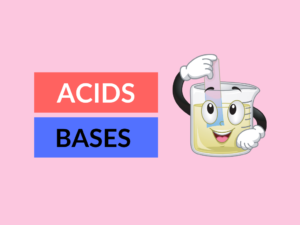Difference between Acidic and Basic
Acidity and basicity are fundamental properties of substances. Understanding the differences between acidic and basic substances is essential in various fields, including chemistry, biology, and everyday life. In this article, we will explore the characteristics, examples, uses, and key differences between acidic and basic substances.
What is Acidic?
Acidic substances are those that have a pH value less than 7. They are known for their sour taste and can react with bases to form salts and water. Acids produce hydrogen ions (H+) when dissolved in water, making the solution more hydronium ion (H3O+) concentrated.
Examples of Acidic Substances:
- Vinegar (acetic acid)
- Hydrochloric acid (HCl)
- Lemon juice (citric acid)
- Battery acid (sulfuric acid)
Uses of Acidic Substances:
Acidic substances have various applications, including:
- Vinegar for cooking, cleaning, and preserving food
- Hydrochloric acid in the production of PVC, cleaning agents, and chemical synthesis
- Citric acid as a flavor enhancer and food preservative
- Sulfuric acid in car batteries and industrial processes
What is Basic?
Basic substances, also known as alkaline substances, have a pH value greater than 7. They are characterized by a bitter taste and slippery texture. Bases can accept protons (H+) or donate hydroxide ions (OH-) when dissolved in water.
Examples of Basic Substances:
- Sodium hydroxide (NaOH)
- Ammonia (NH3)
- Baking soda (sodium bicarbonate, NaHCO3)
- Milk of magnesia (magnesium hydroxide, Mg(OH)2)
Uses of Basic Substances:
Basic substances find various applications, such as:
- Sodium hydroxide in soap making and chemical manufacturing
- Ammonia as a cleaning agent and fertilizer
- Baking soda in cooking, baking, and odor absorption
- Milk of magnesia as an antacid and laxative
Differences Table:
| Difference Area | Acidic | Basic |
|---|---|---|
| Taste | Sour | Bitter |
| pH Value | Less than 7 | Greater than 7 |
| Ion Production | Produces hydrogen ions (H+) | Accepts protons (H+) or donates hydroxide ions (OH-) |
| Tactile Sensation | N/A | Slippery |
| Example | Vinegar (acetic acid) | Sodium hydroxide (NaOH) |
| Common Uses | Cooking, cleaning, and preserving food | Soap making and chemical manufacturing |
| Reaction with Water | Increases concentration of hydronium ions (H3O+) | Increases concentration of hydroxide ions (OH-) |
| Indicator Color | Turns blue litmus paper red | Turns red litmus paper blue |
| Electrical Conductivity | Acids are electrolytes | Bases are electrolytes |
| Effect on Indicators | Turns phenolphthalein colorless | No effect on phenolphthalein |
Conclusion:
In conclusion, acidic and basic substances differ in several aspects. Acidic substances have a lower pH value, produce hydrogen ions, and taste sour. On the other hand, basic substances have a higher pH value, can accept or donate protons, and taste bitter. Their uses and effects on indicators further differentiate them.
People Also Ask:
Q: What is the main difference between acidic and basic substances?
A: The main difference lies in their pH values. Acidic substances have a pH value less than 7, while basic substances have a pH value greater than 7.
Q: Are acidic substances harmful to human health?
A: Some acidic substances can be harmful if ingested or handled improperly. However, many acidic substances, such as citric acid in fruits, are safe for consumption in moderate amounts.
Q: Can you give an example of a natural acidic substance?
A: Lemon juice is a natural acidic substance, mainly due to the presence of citric acid. It is widely used in cooking and as a natural cleaning agent.
Q: Are all basic substances slippery?
A: Yes, basic substances generally exhibit a slippery or soapy texture. This characteristic is often used to identify the presence of bases.
Q: How do I determine if a substance is acidic or basic?
A: pH indicators, such as litmus paper or pH test strips, can be used to determine the acidity or basicity of a substance. They change color depending on the pH of the tested solution.


